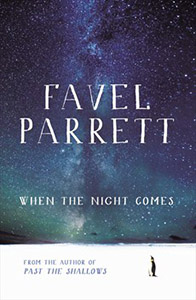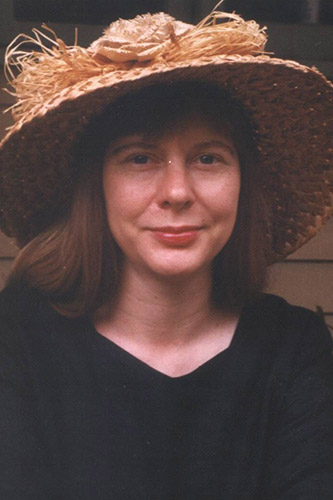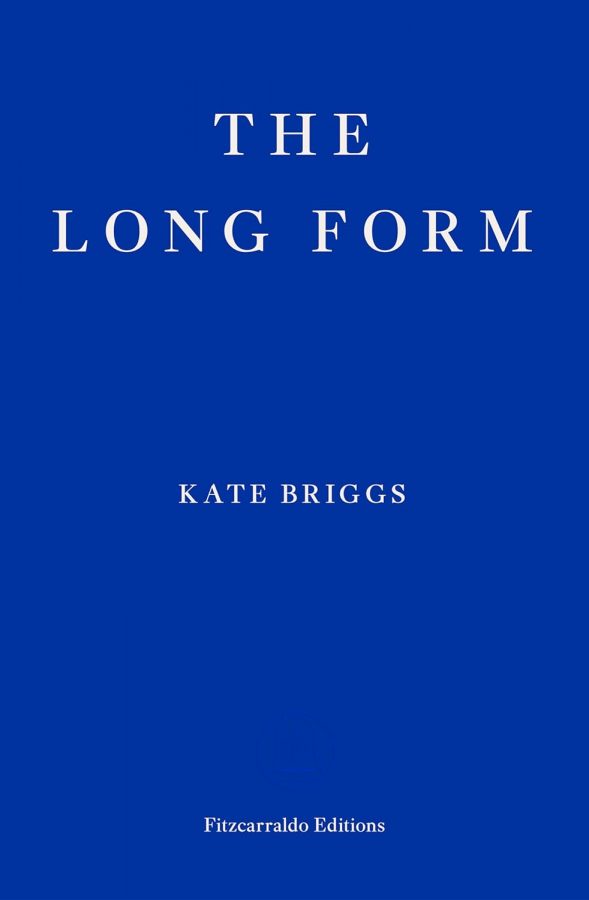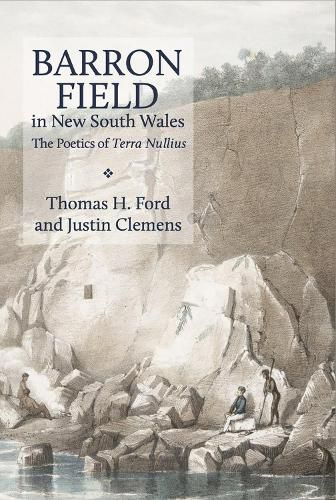In its geography and literature, Tasmania is unlike anywhere else in Australia. It has been separated from the continent for millenia, after the waters rose in Bass Strait. The resultant island is cold and lush, resembling New Zealand, another great antipodean isolate, and also England. In 1873, novelist Anthony Trollope, who was tirelessly globetrotting in search of a travelogue, termed everything in Tasmania ‘more English than England herself’. He found it pretty, though inhabited by ‘pernicious animals’ – by which he probably meant the thylacine, yet to be exterminated, and the Tasmanian Devil. The uncharitable view of some Tasmanians at the time might have been to consider as pernicious some humans as well: the remnants of the Indigenous population, and the convicts, whether recidivist or reformed. Conversely, modern opinion has tended to regard the belligerent settlers, the winners of the Black Wars, as the true pernicious creatures of the island. A later visitor was struck by the disparity between locale and history. In 1895, Mark Twain found Tasmania a ‘paradise’, but one belied by the dark process of its colonisation: ‘It was all out of keeping with the place, a sort of bringing of heaven and hell together.’
Such matters have come to define Tasmanian literature, which despite Trollope’s dictum has never been particularly English. Nor has it been especially pretty. Nature writers from Louisa Meredith onwards have found much to rhapsodise about in the island. But otherwise the mood can tend to the grim. Even MONA, that centrepiece of Tasmania as an art haven, dishes out large helpings of darkness, rather than joyous delight – something that seems not entirely due to David Walsh’s eccentric collecting vision. The First Fleet’s Daniel Southall famously described Sydney Cove’s rockscapes in terms of ruined edifices and grand castles – something that came to seem even more apposite in the apple isle. As Tasmania became colonial and settled, its writing and architecture partook of the Gothic mode.
Literature in Tasmania began strong, and early, with two of the best and most powerful Australian novels of the nineteenth century, Caroline Leakey’s The Broad Arrow (1859) and Marcus Clarke’s His Natural Life (1874), both of which addressed the convict experience. They were also tinged with the Gothic, which has been a persistent literary mode when writing the matter of Tasmania. It unites such diverse novels as Julia Leigh’s The Hunter (1999), Carmel Bird’s Cape Grimm (2005), and the domestic Gothic of Helen Hodgman’s Blue Skies (2011). All of these works express darkness with varying degrees of realism. So when Favel Parrett, a Tasmanian resident for seven years of her youth, wrote Past the Shallows (2011), the Gothic was as integral to the novel’s setting as saltwater is to flotsam. Had it been set in the old slave states of America, the poor white characters, wracked by violence and adultery and struggling to survive, would have resulted in the novel being termed Southern Gothic. But the setting was far more southerly, and different, with coldness a significant factor, both of the heart and the environment.
Unless they are really calculating, novelists are generally too immersed in their project to notice what is modish or certain to find readerly favour – though such knowledge may penetrate, even before the marketing process. Past the Shallows ticked a number of Australian ‘literary’ boxes: surfing, realism verging on the dirty, tortured masculinity. What set it apart was the extraordinary lucidity of its prose, particularly when depicting nature. The style did not strive for the overworked metaphor, nor the false simplicity of Hemingway. The writing was unexceptionable, bar the odd split infinitive, but utterly luminous.
The book hit its pace from its striking opening:
Out past the shallows, past the sandy-bottomed bays, comes the dark water—black and cold and roaring. Rolling out the invisible paths. The ancient paths to Bruny, or down south along the silent cliffs, the paths out deep to the bird islands that stand tall between nothing but water and sky.
Whenever rock comes out of deep water, wherever reef rises up, there is abalone. Black-lipped soft bodies protected by shell.
Treasure.
An introduction like that first entices, then strikes deep as a fishook. What followed was a narrative with a mystery at its core, the chapters alternating between two young brothers. The language and vocabulary were perfectly suited to the child’s-eye view. Although the book was not aimed at the teenage market, it powerfully evoked the anxieties, the insecurity of the young. Small acts of kindness went a long way in its brutal world of cold and sea; the comfort of food, so important to children, was a constant. If Harry, the younger brother, seemed impossibly saintly, a Tiny Tim in Tasmania, then that was a niggle only. The book did not manipulate, nor wallow in sentiment, though it could pack a considerable emotional punch when the author chose.
Small wonder, then, that the book was shortlisted for the Miles Franklin Award, won the Dobbie, and was recommended as a Woman’s Weekly Good Read. It crossed over from the high literati to the popular, from those who read Julia Leigh to the fans of Tim Winton. There were people who loved the book, and it is not hard to see why.
Parrett’s follow-up, When the Night Comes, returns to the Tasmanian setting. Parrett has now spent far more time away from the island than as a resident, but clearly place, and this childhood home in particular, is significant to her sensibility. (Leigh, by contrast, left Tasmania behind for the French setting of her 2008 follow-up, Disquiet.) When the Night Comes takes a step away from the Gothic, but it lurks in the novel still, as in this striking passage near the end:
My brother and I walked on the stone streets – the past there like an owl, watching us from the rusty rooftops. Huge eyes and thin sharp claws that tried to pick at us as we walked. Tried to take away our warmth – steal our joy – take the light away.
But kindness was a shield.
Elsewhere, the Gothic is more peripheral. There is an unidentified sense of dread and melancholy, which takes centre stage in rare incidents, usually involving children: a fatal car accident, an attempted abduction.
While remaining a firm realist, Parrett has shifted into another literary mode for this novel. When the Night Comes is a more modernist project than Past the Shallows. It focuses on the small but significant moments in life that pass almost unnoticed, even by the protagonists, yet have major consequences. Rather than regional Tasmania, the world of fishers, Hobart is the focus: its suburbs, Friends School, and particularly its harbour are deftly drawn. As in her debut, Parrett again makes use of the child’s viewpoint: that clear-eyed observation, that sense of being confined and controlled in a world that adults have made, though she has moved from the world of boys to a girl-child as protagonist – young Isla. In Past the Shallows, the mother was an absent presence; in When the Night Comes, it is the father. Isla’s family has been sundered by marital discord. As in her previous novel, Parrett depicts siblings clinging together for survival. In Past the Shallows, physical violence and poverty put the young brothers at risk; here it is a psychological distance that threatens to harm Isla and her brother. Their mother had the initiative and energy to leave her husband, to make a new life for her children, but now she is too wounded to be able to reach out emotionally. She is usually depicted in darkness, solitary, smoking.
Someone who does reach out to Isla is a Danish sailor named Bo, the warm heart of the novel, who comes to lodge with the family. It is Bo who introduces the story’s other locales: Antarctica and the supply vessel Nella Dan. From Tasmania to the southernmost continent is a logical progression. To visit the port at Hobart is to notice, beyond the MONA ferries in their pomo camouflage paint, the red of the Antarctic supply ships. To quote Christopher Koch’s The Doubleman (1985): ‘South of Hobart, south of Port Davey’s last little lights of settlement, there was nothing, there was the ice.’
Tasmania has a history and literature, but Antarctica is more like a blank white page, largely uninscribed. It has had some fine non-fiction books written about it, such as Apsley Cherry-Garrard’s The Worst Journey in the World (1922), about the Robert Scott expedition, in which British grit and understatement combine to create a classic travelogue. Humans have been visiting and overwintering on Antarctica for over a century now. Yet it has proved a curiously evasive subject for fiction. The frozen wasteland has tantalized from a distance, providing inspiration for writers who never saw it, including Jules Verne and Coleridge in ‘The Ancient Mariner’. More recently, authors such as Tom Keneally and Kim Stanley Robinson have used it as a setting. The latter’s Antarctica (1997) is futuristic, but based on a visit to McMurdo Station.
One of the most influential fictions about Antarctica was by a non-visitor: John W. Campbell’s Who Goes There? (1938), which was filmed as The Thing (1951; 1982; 2011). It was originally published in pulp-land, but has enjoyed a long pop culture afterlife. For the movie versions, the setting became the Arctic – a locale that has proved far more fruitful for writers, with its Siberian gulags and the armoured polar bears of Philip Pulman’s ‘Dark Materials’ trilogy. Recently, it has inspired a truly excellent ghost novel, Michelle Paver’s Dark Matter (2010), in which the realism of Cherry-Garrard meets the terror of Campbell. Antarctica is a great unknowable, it would appear. It seems to function best in fiction when it is wholly imagined, as if the experience of the great white expanse itself is overwhelming.
Keneally, in a Granta essay, best expressed the problem with Antarctica as a fictional subject:
I was able to experience the giant landscapes and improbable, barely polluted vistas of Antarctica in so profound a way that it recurred in my dreams for decades … This trip augmented a tendency of mine to see Antarctica as another state of being. Nobody was a native of the place. Only in the past 60 or 70 years had a scatter of human myths become associated with it. But even in its massiveness it had made no tribe unto itself. It had provoked no native tongue, no rites, no art, no jingoism. Its landscapes existed without the permission of humanity. And everything I looked at, even the nullity of the pole, produced jolts of insomniac chemicals in my system. It was not landscape, it was not light. It was super-landscape, super-light, and it would not let you sleep.
Parrett received an Antarctic fellowship to write When the Night Comes, but the continent appears in the novel only briefly. This is curious, given the long sea journey necessary to reach the place, something that emotionally heightens the significance of the destination. Antarctica is the reason why Bo comes into the lives of Isla’s family, for he is a supply ship crewman. Unlike Coleridge, Verne and Campbell, Parrett has experienced Antarctica; yet, compared with her nature writing about Tasmania, the continent seems somehow elusive, as if too great to imaginatively process. When she does describe Antarctica, it is most effectively evoked in fragments, as in this prose poem:
Ice sparkles in the sun
Like diamonds—like jewels, thousands of them there
shining in the white
Beyond—the blue dark water
Above—the blue light sky
And out in the bay—the red of my ship
Red against the sea, the sky
Red against the ice
Red there, calling out to me.
Don’t stay away too long.
Those words encapsulate something that is repeated later in the chapter, when Bo tries to sum up a vista of Antarctica, as seen from a hill. The white and blue are ultimately of less significance than the red of the Nella Dan, a human artefact surrounded by deadly wilderness. There is the sense of something ineffable about the Antarctic, something impossible to capture in words. Far more space is given to the voyage south, the crew, and the ship itself, including a famous incident where the Nella Dan was frozen in by sea ice and a Japanese ice-breaker summoned to a rescue mission.
Bo, a chef, only spends a few hours ashore (Parrett’s time on Antarctica also was limited). The real subject of the book, as Parrett has said, is the vessel. It brings Bo to Hobart, to make his brief but influential appearance in Isla’s life. He moves into the family’s rented house first as a lodger, then as a lover for Isla’s mother. A welcome stranger, he introduces new food culture, and liveliness, throwing parties with his Viking friends. Slowly, Isla’s mother starts to thaw, but when the ship meets disaster, this happy illusion of a step-family is destroyed forever.
Some novels are so realist that hardly anything happens. To achieve such verisimilitude over the course of thousands of words, while not losing the reader, requires a total engagement with character and hookline prose. It is probably the most valorised feat in contemporary Australian writing, and far fewer authors can achieve it than is generally admitted. Usually something is missing: a structure on which to hang the polished vignettes, or a sense of narrative urgency. Australian writing might be in the era of the tricksy postmodern, but creative writing, especially within the academy, is still dominated by modernist strictures. That means narrative, let alone plot, can often be banished to genre.
Past the Shallows was based around a mystery which was revealed gradually. The novel culminated in an action sequence, in which the two young heroes were swept out to sea. It was over the top – and quite possibly unbelievable, when examined closely – but it concluded the book in dramatic style.
When the Night Comes is different. Where there were secrets in Parrett’s first book, in the second there is a determined, even stubborn reticence. When relationships are broken, the causes are not at all clear. We do not know Isla’s father, beyond his distant voice on a pay-phone and a scene where he throws his dinner across the room, which functions as a counterpoint to Bo’s loving gourmanderie. The sailor might become Isla’s stepfather, but her mother ultimately pulls back, something that seems far less wounding for her than for Bo and Isla. He becomes a significent absence for the girl. She treasures a photo he has sent of a penguin on Macquarie Island. It will be the only image she has of him, memories apart, but it only shows his accessories: a glove, a boot. Late in the book, Bo, back in Denmark, is shown still recalling his ‘family’ in Tasmania. His happy little daughter is contrasted with the troubled Isla. Though the prose works hard against any such suggestion, this is dangerous territory, especially in the current climate of Royal Commissions and outed pedophiles: depicting an adult male’s friendship with a young girl is to navigate between sharp rocks, because it could be so easily misconstrued. Is that the mother’s problem, perhaps?
The novel seems to be suggesting that Isla and Bo are kindred souls. This point is problematic, for their views of the world, particularly their appreciation of nature, are just a little too similar. The structure of alternating chapters devoted to two different characters worked in Past the Shallows because they were young siblings, their experience and language shared. In this second novel, the uniformity of the authorial voice seems to work against characterisation, particularly Bo’s. A child and a man for whom English (however good) is a second language might both experience their surroundings with simple poetic clarity. But he is older, and male, and his life has been totally different. They cannot be so alike, particularly in their first-person narration. The novel works better when Bo is described in the third-person, as in the scene with his daughter.
Besides nature, Bo and Isla share a love of the Nella Dan, which is far more than a moveable setting, chugging between Hobart and the Antarctic ice. It functions as a presence, or even a character. Ships, like horses, attract sentimentality and devoted fans. Consider the Great Britain in Bristol, a floating museum of emigration, or the Titanic. The Nella Dan may be less famous, but it has its own webpage. At the Melbourne launch of When the Night Comes, a slideshow included shots of Parrett rugged up warmly in the deep south, interspersed with archival kodachromes of the Nella Dan. One woman even wore a t-shirt proclaiming her friendship with the vessel.
Such devotion figures in the novel, although here again, as with Antarctica and the characters’ unexplored motivations, there are absences. The Nella Dan has become a potent signifier to the author, its crew and its passengers, because of the poignancy of its fate. After carrying so many back and forth, through ice and storm, it ran aground off Macquarie Island and, judged too damaged for repair, was scuttled. The best parts of When the Night Comes describe the stunned reactions to the boat’s fate, including a moving sequence where flowers are thrown into Hobart harbour as part of a funeral service. Yet something seems missing here, as if hinting at a passage that proved recalcitrant, refused to write itself. Opportunity exists similarly for Parrett to write Macquarie Island, but it is even less of a presence in the book than Antartica itself. Did the novel’s plan originally include a scene of the boat’s grounding, or its sinking? Here might have been the concluding dramatic tableaux that worked so effectively in Parrett’s debut.
Someone said to me that When the Night Comes reads like a first novel, rather than a second. It is what Past the Shallows was not, tending to be tentative rather than assured. Though poignant and elegant, it is framed too much in snapshots, vignettes, with the connecting matter missing. Here is perhaps the literary equivalent of second-album syndrome: it is too like the debut in its Tasmanian settings, its characters in alternate chapters, that limpid prose. The similarity would not matter if the whole knitted together as well, or even better, than Past the Shallows – if it showed a writer’s progression. As it is, it seems more of the same, but a little less in its impact.
References
John W. Campbell, Who Goes There? (Astounding, 1938).
John Carpenter (director) The Thing (1982).
Apsley Cherry Garrard, The Worst Journey in the World (Carroll & Graf, 1922).
Marcus Clarke, His Natural Life (Bentley 1875).
Howard Hawks (director) The Thing from Another World (1951).
Helen Hodgman’s Blue Skies (Duckworth, 1976).
Thomas Keneally, A Victim of the Aurora (Collins 1978).
⎯ ‘Captain Scott’s Biscuit’, ‘This Overheating World’, Granta, 83 (2003).
Christopher Koch, Doubleman (Triad Grafton, 1986).
Caroline Leakey, The Broad Arrow (Bentley, 1859).
Julia Leigh, The Hunter (Penguin, 1999).
Favel Parrett, Past the Shallows (Hachette, 2011).
Michelle Paver, Dark Matter (Orion, 2010).
Kim Stanley Robinson, Antarctica (Voyager, 1997).
Anthony Trollope, Australia and New Zealand (Robertson, 1874).
Mark Twain, Following the Equator (American Publishing Company, 1895).
Matthijs van Heijningen Jr. (director), The Thing (2011).
Jules Verne, An Antarctic Mystery (Hetzel, 1897).







